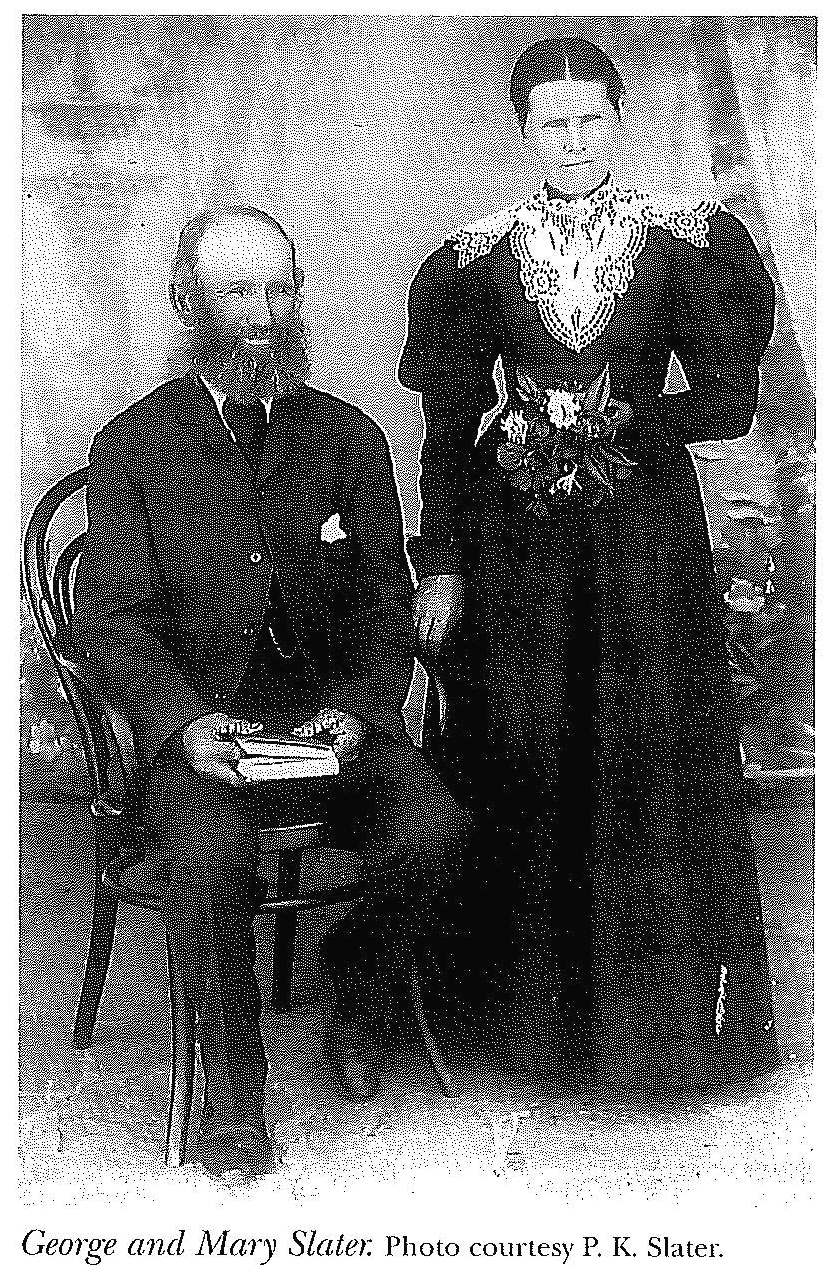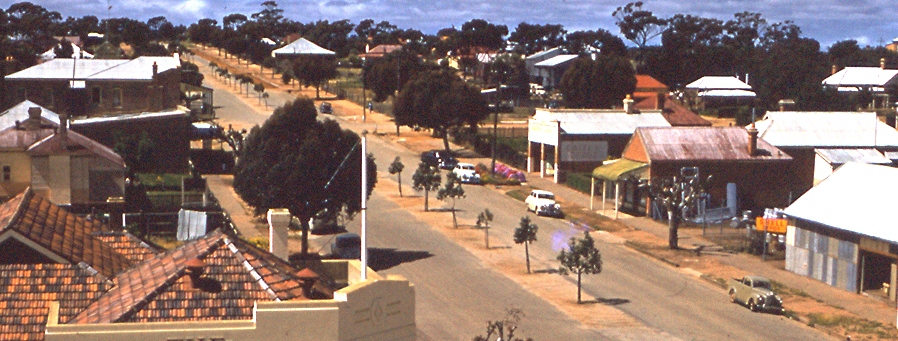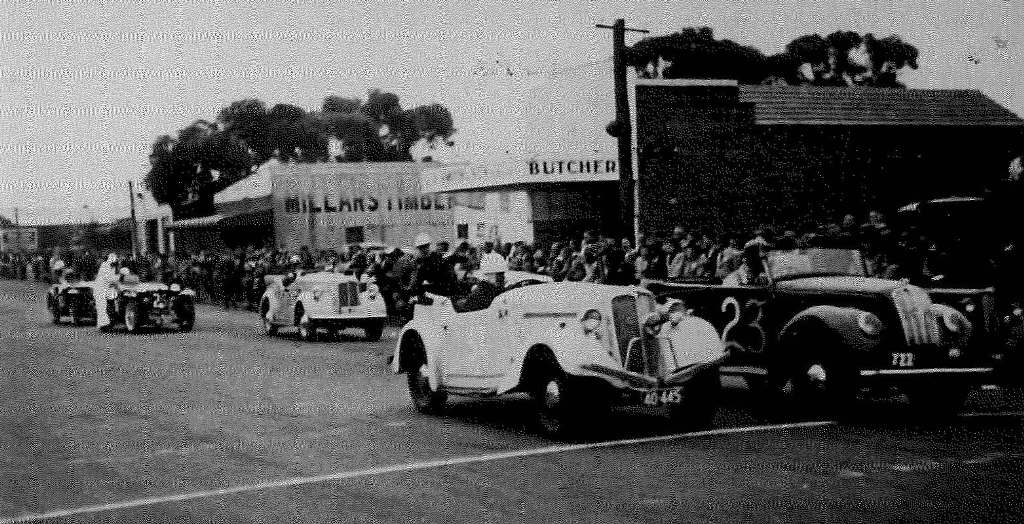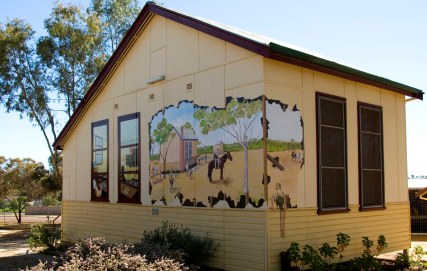Goomalling's History
Indigenous heritage
The name 'Goomalling' originates from the Nyoongar word 'Koomal', the Silver-Grey Possum that was once abundant in the area.
As Barbara Sewell describes in her book 'Goomalling - a Backward Glance: a History of the District':
"The Goomalling district was occupied by the Balardong people, a tribe of about 500, part of the thirteen Nyungar tribes which occupied the fertile triangle of Southwestern Australia extending from Geraldton to Esperance. The Balardong people inhabited a territory bounded approximately by the present centres of Dalwallinu in the north, to Bolgart in the west, Brookton in the south and the towns of Bencubbin, Kellerberrin and Harrismith in the east.
The size of an Aboriginal tribal area was dependent on the fertility of the land, the quality and quantity of natural resources, and the ability of an area to sustain its members in a relatively self contained system.
Within the present day boundary of the Goomalling Shire are many place names of Aboriginal origin, chiefly water holes and geographical features which the Balardong people hospitably escorted the Europeans to on their explorations, and gladly pointed out when shepherds and settlers moved into the district. The Balardong people initially believed the European to be their dead kinfolk reincarnated as “jumped up again white man”. Among the places known to them were Bebakine, Birringdinning (later abbreviated by Europeans to Berring), Burabadji, CooningCooning, Karranadgin, Goonaring, Jennacubbine, Jurokine, Kalguddering, Konnongorring, Mumberkine, Mungalin, Qualin, Quelquelling, Ucarty and Wongamine."
First colonial settlement around Goomalling
Surveyor Alfred Hillman first marked Goomalling Spring on a map, when he and Gerald de Courcy Lefroy made an exploratory trip to the area in June 1846. Lefroy was looking for pasture lands and wasn't impressed with the district, which comprised mainly sand plains and scrub, although Hillman noted on his exploration plan that the area around the Spring contained rich grassy country.
 In 1855, George Slater took up a pastoral lease on 20,000 acres of land surrounding the Goomalling Spring and became the first permanent settler in this area setting up a barn, sheep yards and a homestead, which still stands and has been restored as a tourist destination.
In 1855, George Slater took up a pastoral lease on 20,000 acres of land surrounding the Goomalling Spring and became the first permanent settler in this area setting up a barn, sheep yards and a homestead, which still stands and has been restored as a tourist destination.
When a request for a school in Goomalling was turned down in 1868, George Slater built a school room and residence on his property, and engaged a teacher for the Slater family and the children of the district.
During the gold rush days of the late 1800s, Mr Slater turned part of his homestead into a Wayside Inn offering accommodation, hay and water to the many prospectors passing through on their way to the Yilgarn Goldfields, following what we now refer to as the Pioneers’ Pathway.
Becoming a townsite
 As the area around Goomalling continued to expand, the railway line was extended from Northam to Goomalling in 1902. It took nearly two years to complete and within a year of the opening of the railway line Goomalling was declared a town.
As the area around Goomalling continued to expand, the railway line was extended from Northam to Goomalling in 1902. It took nearly two years to complete and within a year of the opening of the railway line Goomalling was declared a town.
When 30 blocks were offered for sale by public auction on 8 October 1903 there was keen competition and spirited bidding for purchase. Whilst land values were reckoned at between 10 to 20 pound per block, sales realised upwards of 20 pound with the highest bidder paying 197 pound for Lot 11, situated on the corner of Railway Terrace and Forrest Street. The total proceeds of 881 pound was indicative of the confidence buyers placed in the Goomalling district as a thriving community and a townsite destined for expansion.
The population of Goomalling steadily grew and was well supported by services and facilities; both private and government enterprises blossomed.
Advances in machinery and technology in the 70s and 80s saw a decline in farm labourers and their families reducing the population of the area.
Classic Motor Races
 From 1949 to 1955 Goomalling was the stage for annual motor racing events, organised in honour of the local men who's lives were lost during the war and to raise funds for a swimming pool as a permanent war memorial and as a way of ensuring that young people of the wheatbelt would learn to swim.
From 1949 to 1955 Goomalling was the stage for annual motor racing events, organised in honour of the local men who's lives were lost during the war and to raise funds for a swimming pool as a permanent war memorial and as a way of ensuring that young people of the wheatbelt would learn to swim.
These races have been recounted elaborately in 'Goomalling's Classic Racers' by Graeme Cocks, providing insights in the town's history and development.
Goomalling in the 21st century
Goomalling has become a desirable destination for retirees looking to relocate to a well serviced less expensive situation enabling them to sell up, reinvest and have cash in the bank.
There has also been a gradual change in the aspirations of our young people with more wanting to live and work in Goomalling.
Steady increases in population will allow for the ongoing development of goods and service providers and increase the sustainability of our town.
Historical buildings and places
Follow the Heritage Walk through the Goomalling townsite along the old cordial factory, the flour mill, churches, convent, railway station and many other places of historical interest. Grab a brochure from the Shire Office to get some interesting facts and insights about our town in the early days.
 The historic Slater Homestead is definitely worth a visit too, for locals as well as visitors with an opportunity to enjoy a cuppa and delicious cake or a light lunch at Mary's Tearoom.
The historic Slater Homestead is definitely worth a visit too, for locals as well as visitors with an opportunity to enjoy a cuppa and delicious cake or a light lunch at Mary's Tearoom.
The homestead can also be hired as a venue for functions, providing a remarkable setting for family reunions, high teas, exhibitions etc.

Visit the Goomalling School House Museum for a glimpse of local history. There is a display of old machinery, a rare windmill, plus a school room and adjacent school master’s residence that were originally the Konnongorring School, now restored to reflect the 1900-1940 era.